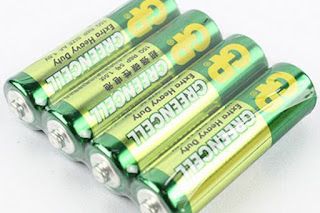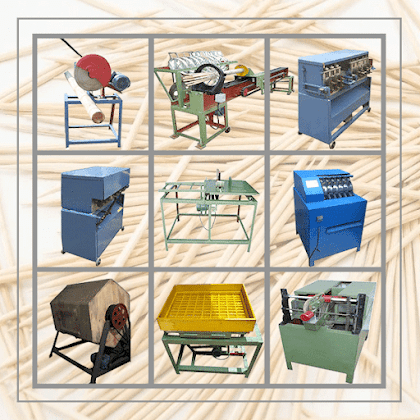What are the types of batteries?
Carbon zinc battery
Carbon zinc battery is also known as carbon zinc dry battery, carbon battery and carbon cell. The shell is composed of zinc. It can be used not only as the container of the battery, but also as the negative electrode of the battery. Carbon zinc battery is developed from liquid Leclanche battery. Traditional or general type uses ammonium chloride as electrolyte; The battery is usually a carbon zinc battery with zinc chloride as electrolyte, which is an improved version of the commonly used low-cost battery. The positive electrode of the battery is mainly composed of powdered manganese dioxide and carbon. Electrolyte is a paste solution formed by dissolving zinc chloride and ammonium chloride in water. Carbon zinc battery is the cheapest primary battery, so it has become the first choice for many manufacturers, because they often need to distribute batteries in the equipment sold by these manufacturers. Zinc carbon batteries can be used in low-power devices such as remote controls, flash lamps, toys or transistor radios. The carbon mixed between the carbon rod of the positive electrode of this battery and manganese dioxide is only responsible for drawing out the current and does not participate in the reaction. The positive electrode actually participates in the reduction reaction and provides positive electricity is the manganese in manganese dioxide. Therefore, it is also called manganese zinc battery, zinc manganese battery or zinc manganese dioxide battery, also referred to as manganese dry battery. The voltage of carbon zinc battery is 1.5V.
Zinc air battery
Zinc air battery is a kind of variety with special structure. The negative electrode is made of zinc alloy. The cathode material is oxygen in the air. It is generally sealed during storage, so there is basically no self discharge. Also known as zinc oxide battery, sometimes also known as zinc air battery. Due to the high concentration of electrolyte inside the zinc air battery (potassium hydroxide is strongly alkaline and corrosive), once leakage occurs, it will corrode the components near the battery, and this corrosion may be irreparable and fatal. Because there are holes on the battery and the storage time of the battery after activation and use is very short, the zinc air battery is prone to battery leakage. When using zinc air battery, replace the exhausted battery in time, check the battery condition frequently, and take out the battery when it is not used for a long time. The voltage of zinc air battery is 1.4V.
Lead acid battery
Lead acid battery, also known as lead-acid battery, is a kind of battery. The electrode is mainly made of lead, and the electrolyte is a kind of battery with sulfuric acid solution. It is generally divided into open battery and valve controlled battery. The former requires regular acid injection maintenance, while the latter is a maintenance free battery. The principle of storage battery is to convert chemical energy and DC energy into each other, and recover after charging after discharge, so as to achieve the effect of reuse. The voltage of lead-acid battery is 2V.
Gel Battery
Colloidal battery belongs to a development classification of lead-acid battery. The simplest way is to add gelling agent to sulfuric acid to make sulfuric acid electrohydraulic become colloidal. Electrohydraulic colloidal battery is usually called colloidal battery. Electrohydraulic is changed to gelled. For example, non condensable solid aqueous colloids belong to colloidal batteries from the perspective of electrochemical classification, structure and characteristics. Another example is the attachment of polymer materials in the grid, commonly known as ceramic grid, which can also be regarded as the application characteristics of colloidal battery. The difference between colloidal battery and conventional lead-acid battery is from the initial understanding of electrolyte gelation to the study of electrochemical characteristics of electrolyte infrastructure and its application in grid and active substances. The discharge curve of colloidal battery is straight, the energy ratio is more than 20% larger than that of conventional lead-acid battery, the service life is generally about twice as long as that of conventional lead-acid battery, and the high-temperature and low-temperature characteristics are much better. The voltage of colloidal battery is 2V.
Nickel cadmium battery
Nickel cadmium battery (NiCd) this kind of battery uses nickel hydroxide (nioh) and metal cadmium (CD) as chemicals to generate electric energy. Compared with other types of batteries, the advantages of nickel cadmium batteries are that they can store a certain amount of energy with small weight, high charging efficiency, little change in terminal voltage during discharge, small internal resistance and low requirements for charging environment. The disadvantages of nickel cadmium battery are memory effect and heavy metal pollution of pot. The voltage of nickel cadmium battery is 1.2V.
Nickel metal hydride battery
Nickel hydrogen battery (NIMH) is improved from nickel pot battery, which replaces cadmium (CD) with metal that can absorb hydrogen. At the same price, it provides higher capacitance than nickel cadmium battery, less obvious memory effect and lower environmental pollution (excluding toxic cadmium). Its recycling efficiency is better than that of lithium-ion battery. It is known as the most environmentally friendly battery. However, compared with lithium-ion battery, it has higher memory effect. The old Ni MH battery has high self discharge reaction, and the new Ni MH battery has quite low self discharge (about the same as alkali electricity) and can work at low temperature (- 20 ℃). Ni MH batteries have higher output current than carbon zinc or alkaline batteries, and are relatively more suitable for high power consumption products. Some special models even have higher output current than Ni Cd batteries.
At present, the capacity of Ni MH battery is higher than that of alkaline battery (volume). Taking AA battery as an example, the capacity of Ni MH battery can reach 2900mAh (MA an hour, the Chinese mainland has always called mAh r MHN), while alkaline battery is only ~2100mAh, and of course it is much higher than that of Ni Cd battery, but it is still not available for Li ion battery. Alkaline batteries will leak out slightly corrosive and harmful liquids after long-term non use (which will be harmful to human body or damage the device using the battery), and lithium batteries have the opportunity to burn or explode when they are not suitable for use. Relatively speaking, Ni MH battery is the safest battery. The voltage of Ni MH battery is 1.2V.
Lithium ion polymer battery
Lithium ion polymer battery, also known as polymer lithium battery, lithium polymer battery. It is a rechargeable battery with colloidal polymer as electrolyte. The safety problem that lithium ion battery is easy to explode under high temperature is avoided. Compared with lithium-ion batteries, lithium polymer batteries have the following characteristics:
1. There is no problem of battery liquid leakage. There is no liquid electrolyte in the battery and colloidal solid is used.
2. It can be made into thin battery: its thickness can be as thin as 0.5mm.
3. The battery can be designed into a variety of shapes, with a maximum bending of about 90 °.
4. It can be made into a single high voltage: the battery with liquid electrolyte can only get high voltage by connecting several batteries in series, while the polymer battery can be made into multi-layer combination in a single battery to achieve high voltage because it has no liquid.
5. The capacity will be twice that of a lithium-ion battery of the same size. The voltage of lithium ion polymer battery is 3.6 ~ 3.7V.
Lithium iron phosphate battery
Lithium iron phosphate (molecular formula: limpo4, English: lithium iron phosphate, also known as lithium iron phosphate and lithium iron phosphorus, referred to as LFP), is a cathode material of lithium-ion battery, also known as lithium iron phosphorus battery. It is characterized by no precious elements such as drilling, low raw material price and abundant resources of phosphorus, lithium and iron in the earth, so there will be no feeding problem. It has moderate working voltage (3.2V), large capacitance (170mAh / g), high discharge power, fast charging, long cycle life and high stability in high temperature and high heat environment. The voltage of lithium iron phosphate battery is 3.2 ~ 3.3V.










评论
发表评论